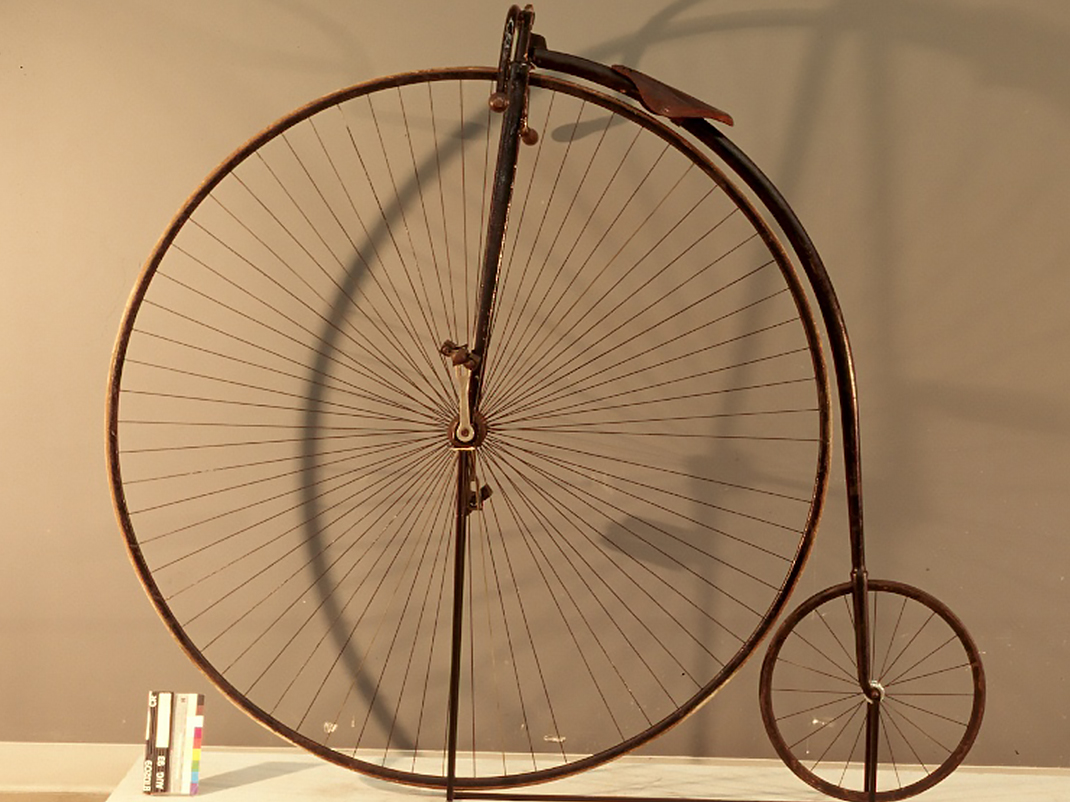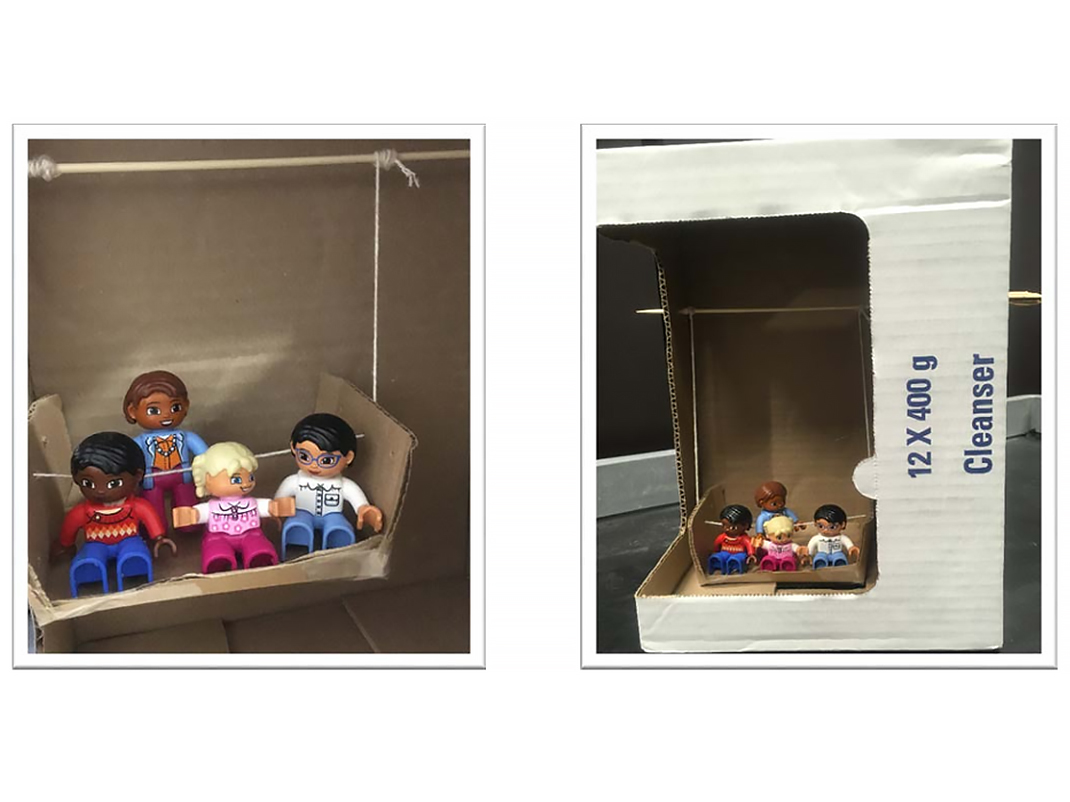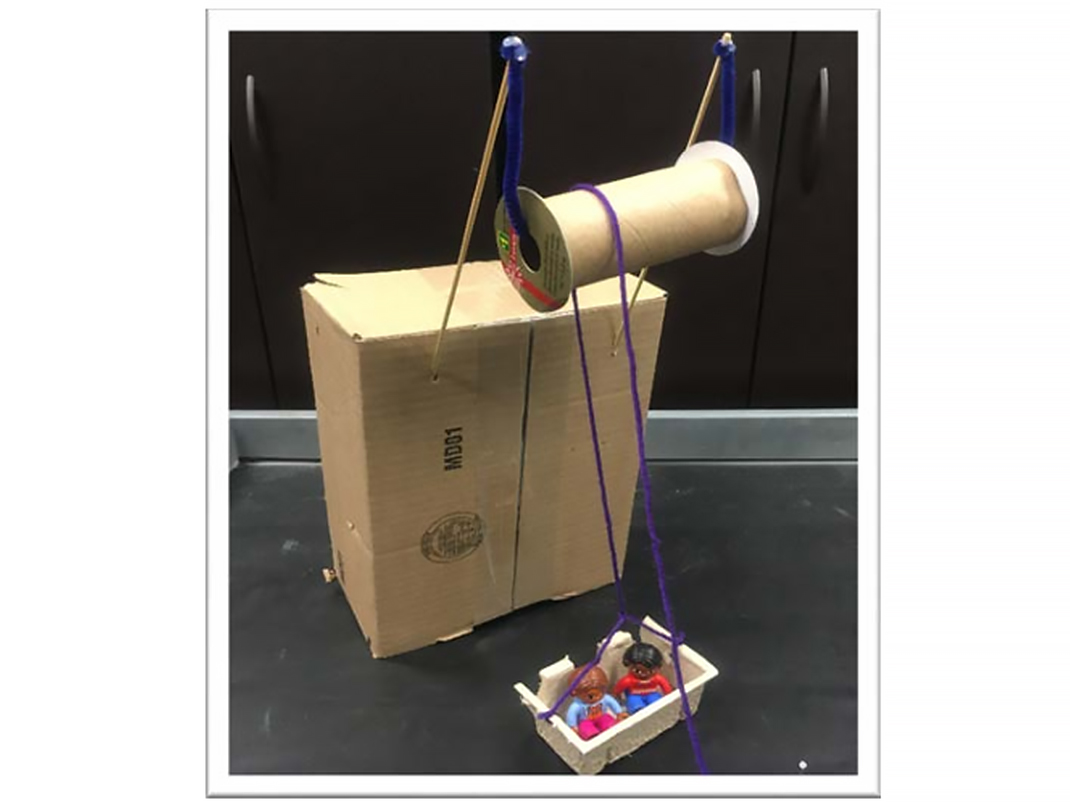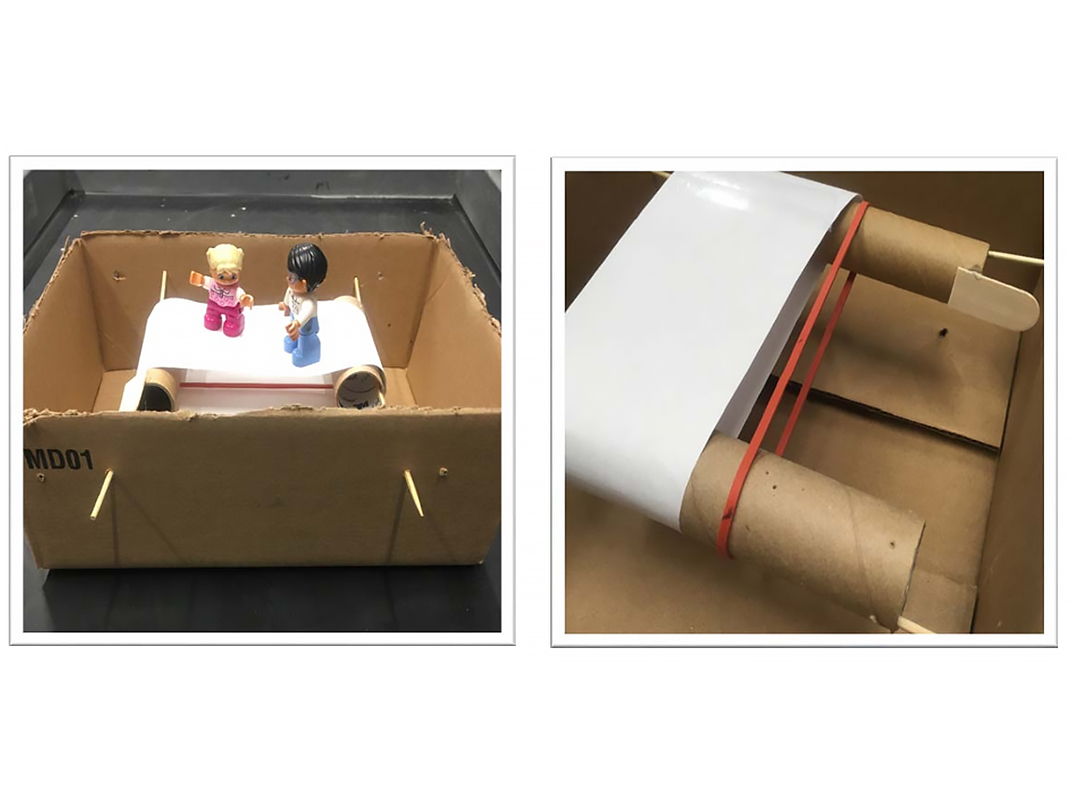Pulleys and gears
Grades 3 to 5 (Ontario)
Elementary cycle 2 (Quebec)
Get your students in gear and lift them to new heights while exploring how pulleys and gears help us do work more easily.
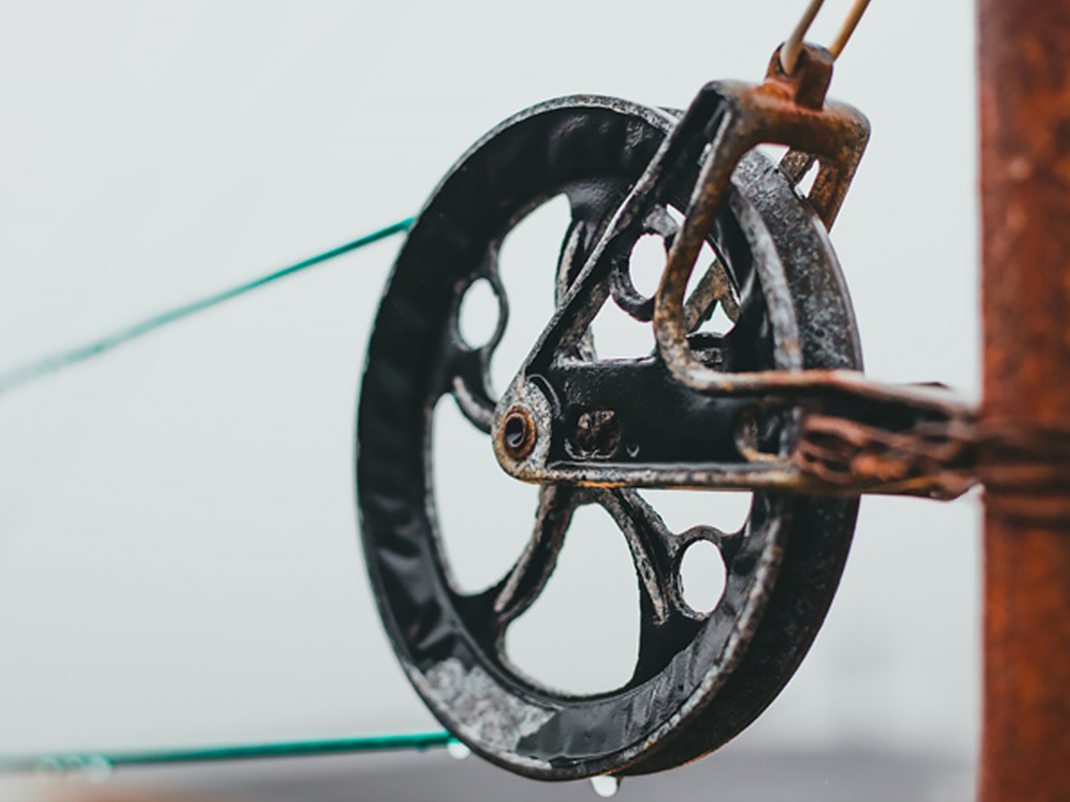
Share :
Simple machines
Learning objective
Students will review their knowledge of simple machines. By the end of this activity, the students should be familiar with the various types of simple machines and how they help us do work.
Materials
- Activity sheets
- Pencils
Introduction
Start by discussing a few basic concepts about simple machines:
- What are simple machines? (They help us do work – help us move things more easily.)
- Make a list on the board of some simple machine examples. Can the class name all seven types?
Inclined planes
- Ramps
- Screws
- Wedges
Levers
- Levers
- Wheel and axles
- Pulleys
- Gears

Instructions
Pass out the activity sheets. Ask the students to draw a line from the name of the type of simple machine to the drawing that fits into that type.
Please see the printable PDF at the bottom of the page.
Note: Some objects could have more than one simple machine within them. For example, a can opener uses a lever, wedge (to cut), and has gears.
Summarize and go further!
Review: Discuss the various images and what type of simple machine that they represent. Don’t forget some objects may have more than one type of simple machine incorporated into them. Encourage discussion around these ideas. For example, students may comment that the boat ramp image used to convey ramps could also be used for wheel and axle (on the boat trailer), or even levers with the trailer on the wheel axle as a fulcrum.
Revisit the questions from the introduction. When we said that simple machines help us do work, what did we mean? (Simple machines help us move a load over a given distance. Work = Force x distance.)

Try it out
Ask students to pair up. Facing each other, one should extend their arms out all the way. The other should then try to push their partner’s hands down. Try again—this time with the first person’s hands in closer to their body. Which way requires more force?
(It is easier to push the hands down when they are far away from the person’s body. The same amount of work is being done, so if the distance is greater the force will be less.)
How do bicycle gears work?
Learning objective
To demonstrate to students how gears on a bicycle work
Materials
- Bicycle with gears
- Masking tape
Safety note: Ensure the students are a safe distance from the bicycle in case it should fall over.
Instructions
- Place the bicycle upside down on the floor, so you can turn the pedals and see the back wheel turn. If you have access to a bike stand, you could use this instead.
- Have the students sit around the bicycle.
- Ask the students a few questions. Who owns a bicycle? Who likes to ride a bicycle? Does riding a bicycle make our lives easier? (Yes, it uses simple machines to help us do work.)
- Point out the air valve on the back tire.
- How does the pedal make the bike move? (The pedal is connected to a gear which is connected to a gear at the back by the chain.)
- When I push on the pedal, do you think the gear attached to the pedal will turn the same number of times as the gear attached to the back wheel? (Get hypotheses.)
- Tell the students you’re going to check out our hypotheses.
- Place a piece of tape on the front gear and one on the back gear. Get some students to count at the front and others to count at the back.
- Slowly turn the pedal one rotation and see how many times the front and back turned.
- Why do you think the front and back didn’t turn the same number of times? What is different? (They are different sizes.)
- Have the students count the teeth on the front gear and those on the back one.
- The difference between the number of teeth on the two gears is called the gear ratio. Ask the students: What gear combination they would use to make the bicycle go as quickly as possible? (Front gear turns the fewest times – big; back gear turns the most – small.)
- Ask the students: What gear combination would you use to make it as easy as possible to go up a hill?
(Small front gear/large back gear. The same amount of work is required to get up the hill no matter how you do it (W=Fxd). You are travelling the same distance with a net force. If you have a small front gear, the back wheel only turns a short distance for each rotation of the pedals. This means that the force you need to move a short distance up the hill is spread over the entire turn of the pedals. However, if you went up the same hill in a higher gear (large front gear, small back gear), for each time you turn the pedals the back wheel will turn many more times; this would be much more difficult. While the force needed to get up the hill stays the same, it is now spread over fewer turns of the pedals so you would need more force to move the pedals the same distance around. This uses the same concept as pulleys, where if the distance is large the force will be small to accomplish the same amount of work. Small front gear, you have to turn the pedal many times (greater distance) so less force is required. Large front gear, you have to turn the pedal fewer times (smaller distance) so more force is required.)
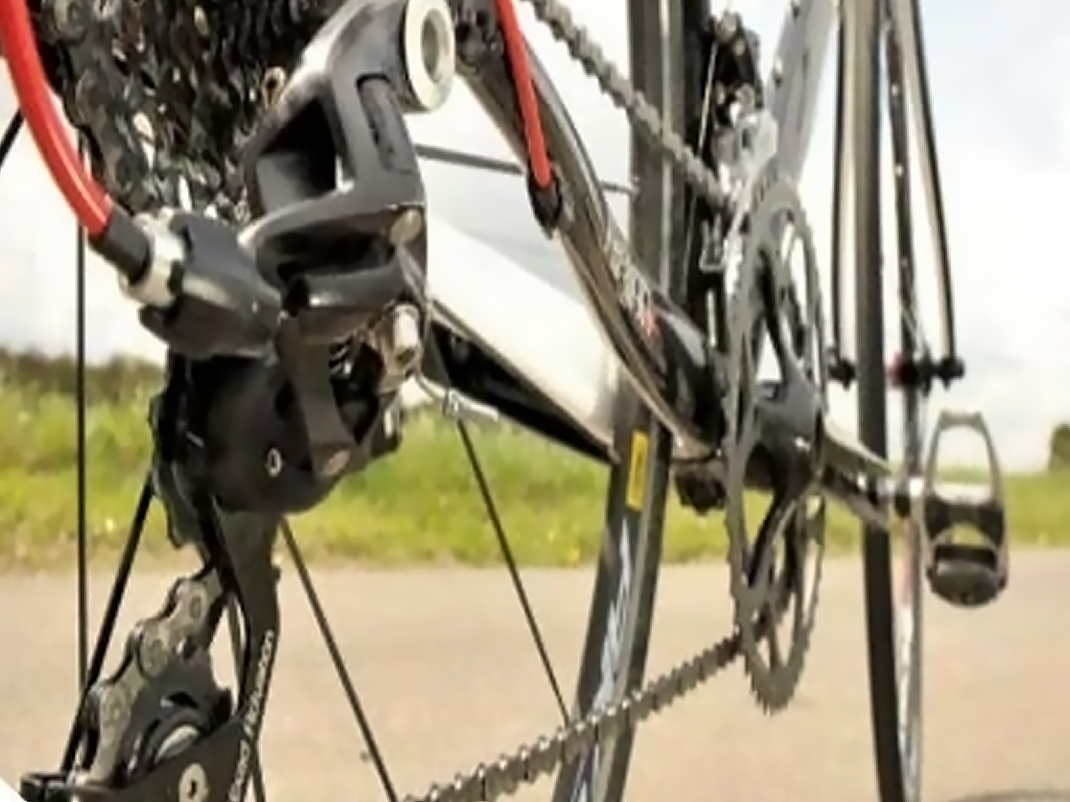
Summarize and go further!
- How did bicycles work before gears were invented? (The original bicycle—called the “hobby horse”—had no pedals. The rider pushed his feet against the ground. A major development was to put pedals on the front hub, like a tricycle. One turn of the pedals resulted in one turn of the front wheel.)
- In a penny farthing, why is the front wheel so big? (It lets the rider go faster.)
- Now there are still bikes that don’t have gears, but most do. Some bikes can have up to 30 or more different gear ratios.
- In a bicycle, the gear ratios change how much the rear wheel turns for each pedal stroke.
- A specific amount of work is required to get you up a hill on a bicycle. However, depending on what gear you are in, the force required to do so can vary a lot.
In summary, since a set amount of work is required to climb the hill, less force is required by the rider if the input is spread over many turns of the pedals—rather than just a few.
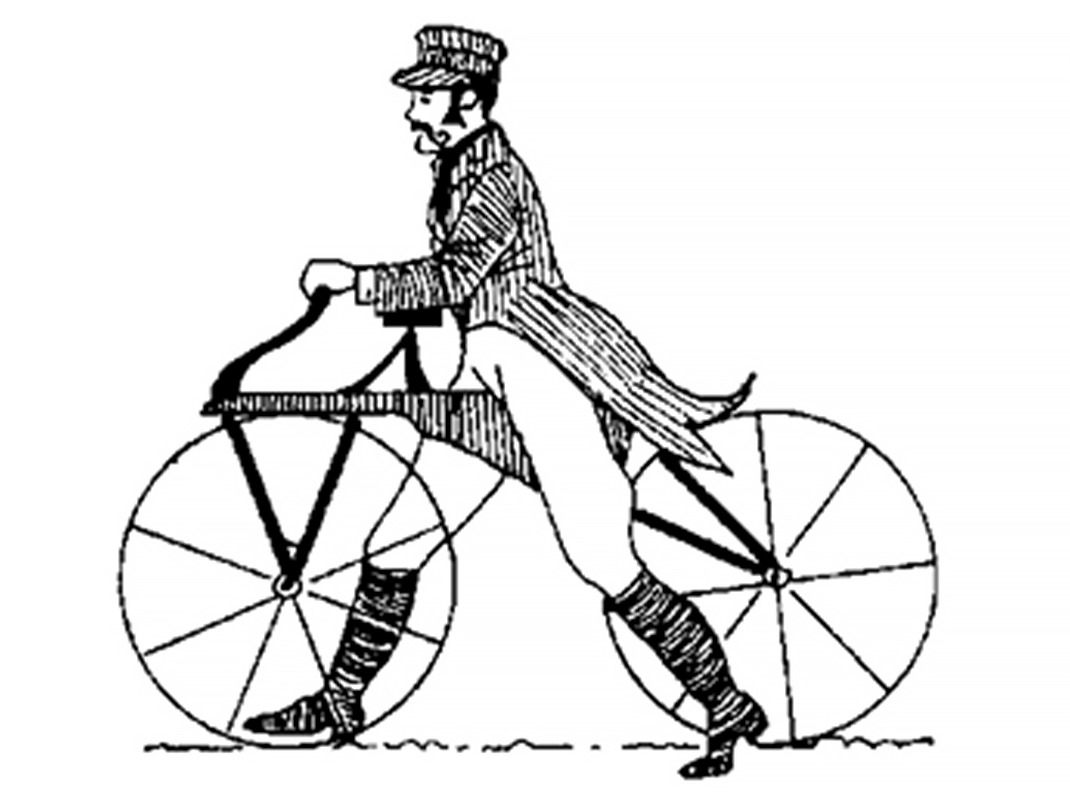
Help the museum design some people movers!
Learning objective
Students will strengthen their knowledge of pulleys and/or gears. By the end of this activity, students will have had the opportunity to experiment with pulleys and/or gears and will have extended their learning on how these simple machines help us in everyday life.
Goal
The museum is very busy with visitors; we need ideas for people movers. Build a prototype that uses pulleys and/or gears and can move an object weighing at least 25 g over 10 cm or more. Since the museum prides itself on being environmentally friendly, we ask that participants use as many recycled materials as possible. This activity can be done individually or in groups.
Materials
Any recycled material you can find: cardboard juice containers, cereal boxes, Kleenex boxes, toilet paper tubes, Pringles can, spools, straws, cardboard, paper, tape, glue, string, paper clips, etc.
Some ideas
- Elevator – moves an object up and down
- Crane – lifts up and drops off an object
- Escalator – moves an object up an inclined plane by having the ‘floor’ move
- Moving sidewalk
- Zip line – moves an object overhead over a distance by having it hang from a wire, like a clothesline
Students can make any device they choose, as long as it safely moves 25 g (10 pennies or more) over 10 cm or more (or whatever criteria you decide to have for the designs).
Summarize and go further!
After the projects have been completed, have the students present their creations to the rest of the class. See what worked well and what students had problems with. If the project includes a single fixed pulley, is the force required to lift the load decreased? (No, but it helps by changing the direction.) If a second pulley or more is added, will the force required to lift the load be reduced making it easier to lift the load?
Printable PDFs
Simple machines activity sheet (PDF, 241 KB)
Simple machines answer sheet (PDF, 287 KB)
You may also be interested in
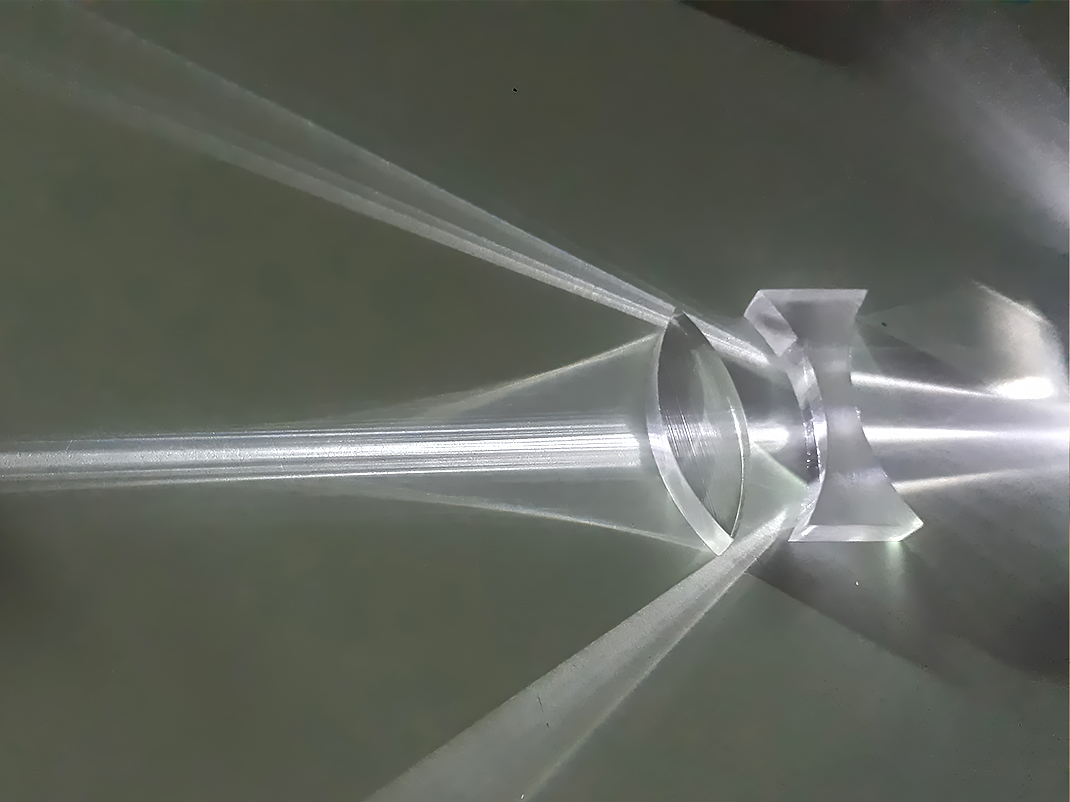
Light paths
Explore the science of light with this interactive lesson plan! Students investigate how light behaves, interacts with mirrors and lenses, and applies to real-world optics. Engaging experiments and discussions make learning about reflection, refraction, and vision exciting and hands-on!
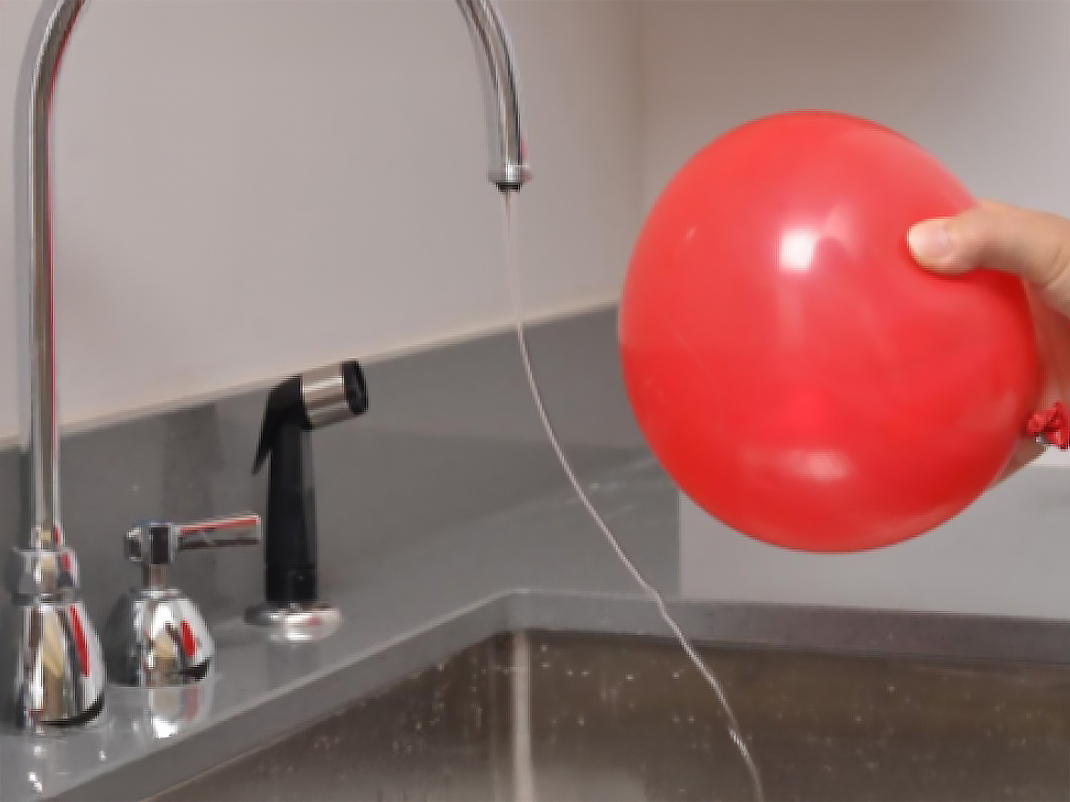
Electri-city
Spark curiosity in your students with this interactive electricity lesson plan! Through hands-on experiments and engaging activities, they’ll explore charged materials, simulate electric currents, and build working circuits—bringing science to life in your classroom!

Soil superheroes
Uncover the hidden world of soil with this engaging lesson plan! Students will explore the composition, characteristics, and ecosystem of soil while learning about the “soil superheroes” that make the Earth thrive. Through hands-on activities and experiments, they’ll discover how their actions impact the soil and its vital role in supporting life on land.
